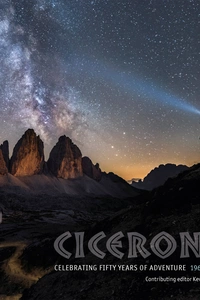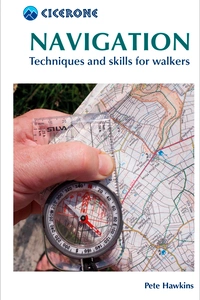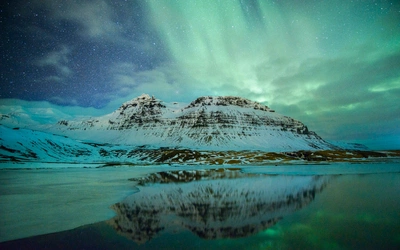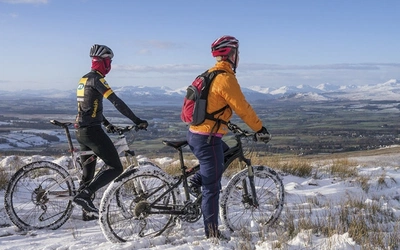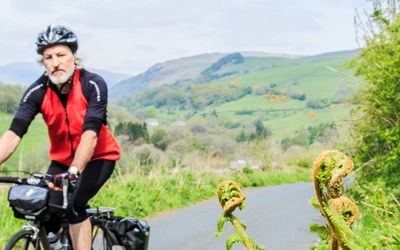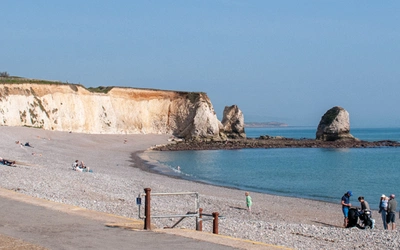Smartphone Photography – 12 easy hacks for better pictures
We all love to take photos of the outdoors - whether that’s from a garden or hill-top, or just of our efforts to be outside, and a modern smartphone can be a really good option for outdoors photography. Outdoor photographer Chiz Dakin explores some of the advantages of smartphone photography when excess weight is an issue, providing some tips and reminders on the key elements that help create better pictures.
During a pandemic when all the rules seem to be turned on their heads and whatever was true yesterday has probably been upturned today, one thing remains true. Even in crisis, we still like to take photos of the outdoors - whether that’s from a garden or hill-top, or just of our efforts to be outside!
If you’d asked me 10 years ago, I’d never have thought I’d say this, but a modern smartphone can be a really good option for outdoors photography.
All the more so if travelling light is essential, as is often the case with backpacking, running or cycling. And while the quality of a “proper” (aka mirrorless or DSLR) camera still can’t (yet!) be beaten for printing large images, for the majority of us who simply want good memories to share online, it’s perfect. I’ve been using my smartphone as a backup to my main camera for a few years now. And being waterproof, it’s often been the preferred choice in very wet conditions, or during “lockdown exercise”.
So here are 12 simple hacks for better pictures with your smartphone:

- Slow down. The best images are rarely taken in a rush. Where possible, look around you, and weigh up the options for what will give the best result. But just occasionally you’ll have to be quick to get any shot at all!
- Move around. Don’t just take photos standing up at normal height – crouch down, stand on a boulder or wall, move left or right or nearer or further away from the subject. Changing position slightly can make a great difference to the results – and don’t forget to look up as well as down!



3. Light Direction. Most of the time, you’re best shooting with the sun partially or fully behind you, rather than partially or fully into the sun. It keeps colours more punchy and avoids them looking washed out. But sometimes you can break this rule very creatively!
4. Wet weather. Having a waterproof camera (eg newer Samsung Galaxy/Apple iPhones) is a real benefit. Look for an IP67 or IP68 rating for waterproof, rather than splashproof, protection. Otherwise, keep it in a waterproof pouch most of the time you’re in claggy (or worse!) conditions - a ziplock food bag can work well for a cheap option - and dry it off with a microfibre towel after each use.

5. Framing the scene. Look around the edge of the frame when shooting – think about where is best (or sometimes least worst!) to draw the edge on that ridgeline ahead, or through the sparse trees dotted through the valley. It’s harder with landscape than portraits, and more subjective – but that’s part of the art. And sometimes, conversely, you’ll want to include part of an object to show what you’re doing - eg cycling, kayaking etc…


6. Flash. Switch it off! Most of the time it simply drains your battery, delays the picture taking and produces a worse photo than if you’d not used it. Particularly if you’re taking a shot of the wider landscape – no flash can compete with natural light over a large area, even on a grey day. And it can ruin the ambience of campfire shots! Inside a tent, a couple of headtorches usually work better, although flash does occasionally have its uses – mostly for filling in harsh shadows on a bright sunny day.
7. Add a human touch. Sometimes landscapes are just missing something when shot on their own. To add depth and scale to the image, include your partner or friend in the foreground of the image. (Try not to cut their feet off though!)
8. Zoom. Unless your phone is posh enough to have multiple physical lenses, using the zoom just does the same as cropping the image after shooting but gives you less flexibility. If your phone has additional in-built lenses, these can give great results for objects that are further away; otherwise, get closer to your subject.


9. Close-ups (flowers/insects). Super-close shots are one area where a smartphone can really outperform “proper” cameras (unless you have a dedicated macro lens). Simply as they can still focus when only 5-10 cms from your subject. Many also have a close-up/macro mode in their settings. This uses software to blur out the background as if you were using a much longer lens.
10. Support it. Particularly for closeups, longer lenses, and in low light some form of support usually gives sharper results. Small dedicated supports such as those from me-Foto or Joby can be good – a cheaper though less reliable option is whatever comes to hand – a chair, wall, fencepost or even the ground!
11. Clean the lens! Most smartphones are pretty good at having oleophobic (oil and grease-repellent) coatings, but every so often they will still need a clean with a lens wipe/cloth.

12. If it works for you, enjoy it. While there are a few things that may jar for all (such as a thumb in the way of the lens), photography is mostly very much a personal taste. So don’t worry too much about the pedants – they’re capable of finding some element of fault with just about every photo under the sun!
As long as you like the image, that’s the important thing!
Have we missed anything? Let us know your favourite tips for taking smartphone photos.







